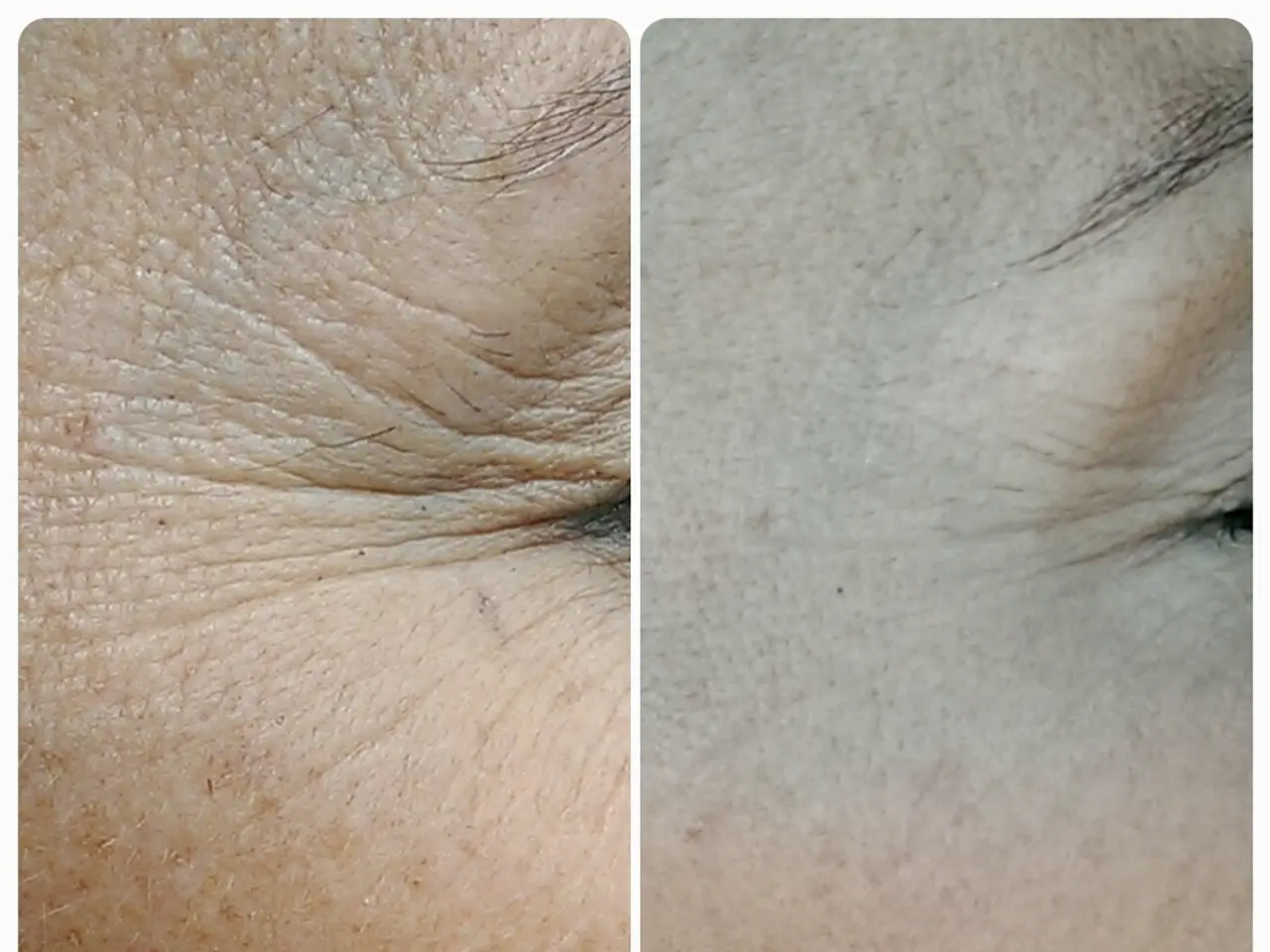Thick and Thin Constitutionality: The Distinction Explained
In the realm of human anatomy, two types of skin stand out: thick skin and thin skin. While they may seem similar at first glance, these two types of skin have distinct features that cater to their respective roles in the body.
Thick skin, primarily found on the palms of the hands and soles of the feet, is adapted for areas subjected to high friction and mechanical stress. This type of skin boasts a much thicker epidermis, especially the outermost layer called the stratum corneum, and contains an additional epidermal layer called the stratum lucidum, which is absent in thin skin. Unlike thin skin, thick skin lacks hair follicles and sebaceous glands [2][4].
The stratum corneum, the upper layer of the epidermis in both thick and thin skin, consists of 20-30 layers of cells. In thick skin, this layer is significantly thicker, providing extra protection and durability to withstand frequent abrasion [1][4]. The stratum lucidum, a thin, transparent layer present only in thick skin, consists of two to three layers of cells and contains a protein called eleidin [3].
Thin skin, on the other hand, covers most of the body, except on the soles of the feet and palms of the hands. This skin type is more flexible and contains hair follicles and glands, supporting a wider range of skin functions including hair growth and sebum secretion [2][4]. The epidermis of thin skin ranges from 0.07-0.15 millimeters (mm), and it contains four layers [1].
Both skin types share the same basic three-layer structure: epidermis (outer protective layer), dermis (thicker middle layer containing connective tissue, blood vessels, sensory receptors, sweat glands), and hypodermis (fat and connective tissue layer for insulation and cushioning). However, the dermis beneath thick skin on palms and soles is generally thicker to support the epidermis against mechanical stress [1][4]. Thin skin has a thinner dermis and overall thinner epidermis [1].
Functionally, thick skin is designed to endure the rigours of daily life, while thin skin caters to a wider range of bodily functions. The stratum corneum in thick skin contains dead keratinocytes, which produce defensins to protect the body from infection, and horny scales, making it tougher and able to thicken into calluses [3]. Dermal papillae, structures connecting the dermis and epidermis, are more prominent in thick skin than thin skin, increasing the surface area between the layers and allowing for more oxygen, food, and waste to pass between the layers [4].
Thin skin, on the other hand, contains both eccrine and apocrine sweat glands, while thick skin only contains eccrine sweat glands [5]. Apocrine sweat glands are not present in thick skin. The epidermis in thin skin is thinner than in thick skin, ranging from 0.07-0.15 mm, and it contains four layers [1].
In summary, thick skin differs from thin skin by having a thicker epidermis including the extra stratum lucidum layer, absence of hair follicles and sebaceous glands, and is found in high-friction areas like palms and soles serving a protective function against friction and pressure. Thin skin is more flexible, contains hair and glands, and covers most of the body [2][4].
- In the realm of skincare, both thick skin and thin skin require attention, with thick skin needing protection against friction due to its absence of hair follicles and sebaceous glands.
- In the medical-conditions context, certain skin-conditions such as calluses or skin-infections may affect thick skin, which contains defensins to protect the body from infection but can still be susceptible.
- For haircare, thin skin, with its presence of hair follicles, plays an essential role in hair growth and sebum secretion.
- In the health-and-wellness domain, focusing on both skin types, regular skincare routines with proper cleansing, moisturizing, and sun protection are crucial for maintaining skin health, as thick skin, despite its robustness, can still age and develop sun damage over time.




